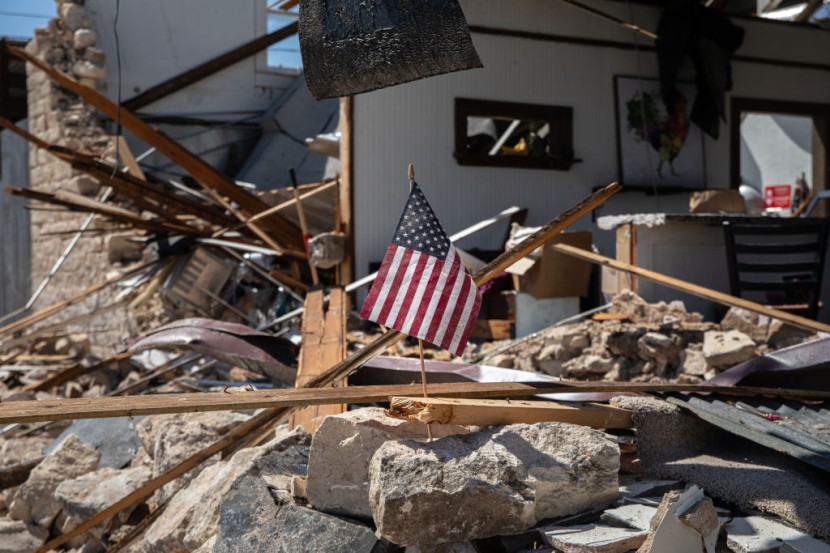
The Storm Prediction Center warned a storm system that caused widespread damage and some injuries in Texas moved toward Louisiana, Mississippi, and Alabama on Tuesday, potentially causing "a regional severe weather outbreak."
According to the weather agency, the affected regions could experience strong tornadoes, especially the cities of Baton Rouge and Jackson, Mississippi. Thousands of hurricane survivors living in government-provided mobile homes and recreational vehicle trailers in Louisiana have been urged to have an evacuation plan because the structures may not be able to endure the impending storm.
Bob Howard, the spokesman for the Federal Emergency Management Agency and the Louisiana Governor's Office of Homeland Security and Emergency Preparedness, reported that more than 8,000 families live in such temporary shelters, as per the Associated Press.
Both agencies issued a joint statement warning residents that "heavy rainfall can occur over the same areas, increasing the risk for flooding." They advise the public to "move to higher ground" once flood warnings have been issued.
The risk-management agencies also advise those dwelling in a state or FEMA temporary housing to keep their cellphones on and fully charged and enable severe weather alert feature enabled as the "danger is expected to be highest at night."
According to a news release issued last week, almost 1,800 households living in trailers directly provided by FEMA are still unable to return to homes ruined by storms Laura and Delta in 2020.
Tornadoes in Texas
Meanwhile, the National Weather Service reported that portions of central and east Texas, particularly Austin and College Station, experienced extreme storms and tornadoes. Photos of the devastation in the areas were posted on social media.
The National Public Radio reported that at least four people got injured from the storm, according to Texas authorities.
In a media conference Monday night, Texas Gov. Greg Abbott said that the storms brought massive damage, and the government will be "shoulder to shoulder" with the calamity victims. He also expressed gratitude that there were no immediate reports of deaths, which he considers "a miracle."
Federal Gov Assistance For Disaster Survivors
Vice President Kamala Harris and FEMA Administrator Deanne Criswell announced from Washington DC on Monday that Louisiana will receive $40 million in federal grants for disaster survivors to improve their homes and make them more resilient against floods.
According to Criswell's Federal Emergency Management Agency, projects eligible for new Swift Current funds include property acquisition and demolition, elevation, and relocation.
Swift Current seeks to aid communities in reducing flood damage and adhering to regulatory standards. To help disadvantaged communities meet their non-federal match payments, FEMA grants more fair access to mitigation grants above the typical 75 percent federal share, as reported by The Advocate.
FEMA is willing to pay more than usual for buildings in socially vulnerable communities - 90% instead of 75%, with the balance, paid locally. For Severe Repetitive Loss properties, the federal cost-share is 100%; for Repetitive Loss properties, it is 90%.
FEMA-funded programs are entirely voluntary, and interested homeowners should contact their local floodplain administrator or emergency manager for further information on FEMA programs and the application process.
The application period runs from April 1 to October 3. The Notice of Funding Opportunity is accessible on Grants.gov.
Related Article : Stimulus Check New York: $1000 Available for New Yorkers [Eligibility, Requirements, How to Apply]
© 2025 HNGN, All rights reserved. Do not reproduce without permission.








